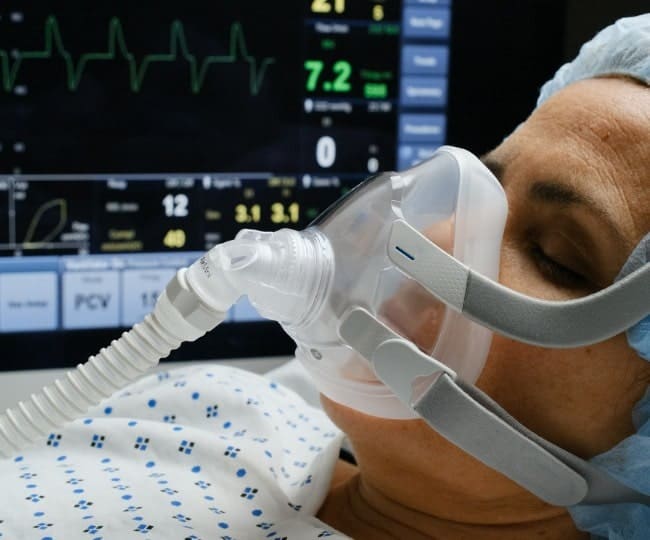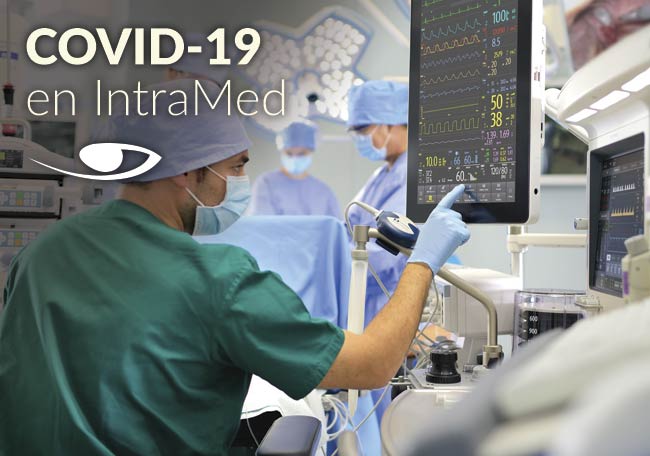Diagnóstico, manejo y prevención | 15 MAR 21
Neumonía asociada al hospital y al ventilador
Aunque existen guías y el conocimiento es cada vez mayor, su incidencia no está descendiendo.

Autor/a: Christopher S. Kovacs, Christopher S. Kovacs Cleveland Clinic Journal of Medicine Vol 87 - Nº 10 Oct 2020.
Referencias bibliográficas
- Kalil AC, Metersky ML, Klompas M, et. al. Management of adults with hospital-acquired and ventilator-associated pneumonia: 2016 clinical practice guidelines by the Infectious Diseases Society of America and the American Thoracic Society. Clin Infect Dis 2016; 63(5):e61–e111. doi:10.1093/cid/ciw353
- Tablan OC, Anderson LJ, Besser R, Bridges C, Hajjeh R; CDC; Healthcare Infection Control Practices Advisory Committee. Guidelines for prevent- ing health-care–associated pneumonia, 2003: recommendations of CDC and the Healthcare Infection Control Practices Advisory Committee. MMWR Recomm Rep 2004; 53(RR–3):1–36. pmid:15048056
- Wang Y, Eldridge N, Metersky ML, et al. National trends in patient safety for four common conditions, 2005–2011. N Engl J Med 2014; 370(4):341–351. doi:10.1056/NEJMsa1300991
- Melsen WG, Rovers MM, Groenwold RH, et al. Attributable mortality of ventilator-associated pneumonia: a meta-analysis of individual patient data from randomised prevention studies. Lancet Infect Dis 2013; 13:665–671. doi:10.1016/S1473-3099(13)70081-1
- Magill SS, Edwards JR, Bamberg W, et al, Emerging Infections Program Healthcare-Associated Infections Antimicrobial Use Prevalence Survey Team. Multistate point-prevalence survey of health care-associated infections. N Engl J Med 2014; 370(13):1198–1208. doi:10.1056/NEJMoa1306801
- American Thoracic Society; Infectious Diseases Society of America. Guidelines for the management of adults with hospital-acquired, venti- lator-associated, and healthcare-associated pneumonia. Am J Respir Crit Care Med 2005; 171(4):388–416. doi:10.1164/rccm.200405-644ST
- Chalmers JD, Rother C, Salih W, Ewig S. Healthcare-associated pneu- monia does not accurately identify potentially resistant pathogens: a systematic review and meta-analysis. Clin Infect Dis 2014; 58(3):330–339. doi:10.1093/cid/cit734
- Chastre J, Fagon JY. Ventilator-associated pneumonia. Am J Respir Crit Care Med 2002; 165(7):867–903. doi:10.1164/ajrccm.165.7.2105078
- Blot S, Koulenti D, Dimopoulos G, et al; EU-VAP Study Investigators. Prevalence, risk factors, and mortality for ventilator-associated pneumo- nia in middle-aged, old, and very old critically ill patients. Crit Care Med 2014; 42(3):601–609. doi:10.1097/01.ccm.0000435665.07446.50
- Metlay JP, Waterer GW, Long AC, et al. Diagnosis and treatment of adults with community-acquired pneumonia. An of?cial clinical practice guideline of the American Thoracic Society and Infectious Diseases Society of America. Am J Respir Crit Care Med 2019; 200(7):e45–e67. doi:10.1164/rccm.201908-1581ST
- Feinsilver SH, Fein AM, Niederman MS, Schultz DE, Faegenburg DH. Utility of ?beroptic bronchoscopy in nonresolving pneumonia. Chest 1990; 98(6):1322–1326. doi:10.1378/chest.98.6.1322
- Balthazar AB, Von Nowakonski A, De Capitani EM, Bottini PV, Terzi RG, Araújo S. Diagnostic investigation of ventilator-associated pneumonia using bronchoalveolar lavage: comparative study with a postmortem lung biopsy. Braz J Med Biol Res 2001; 34(8):993–1001. doi:10.1590/s0100-879x2001000800004
Comentarios
Para ver los comentarios de sus colegas o para expresar su opinión debe ingresar con su cuenta de IntraMed.
Términos y condiciones de uso | Política de privacidad | Todos los derechos reservados | Copyright 1997-2024









